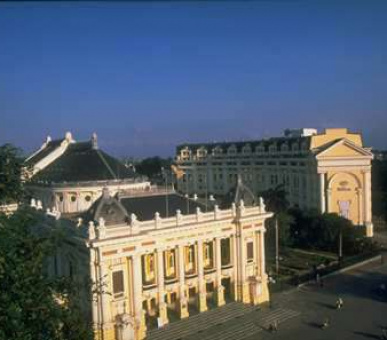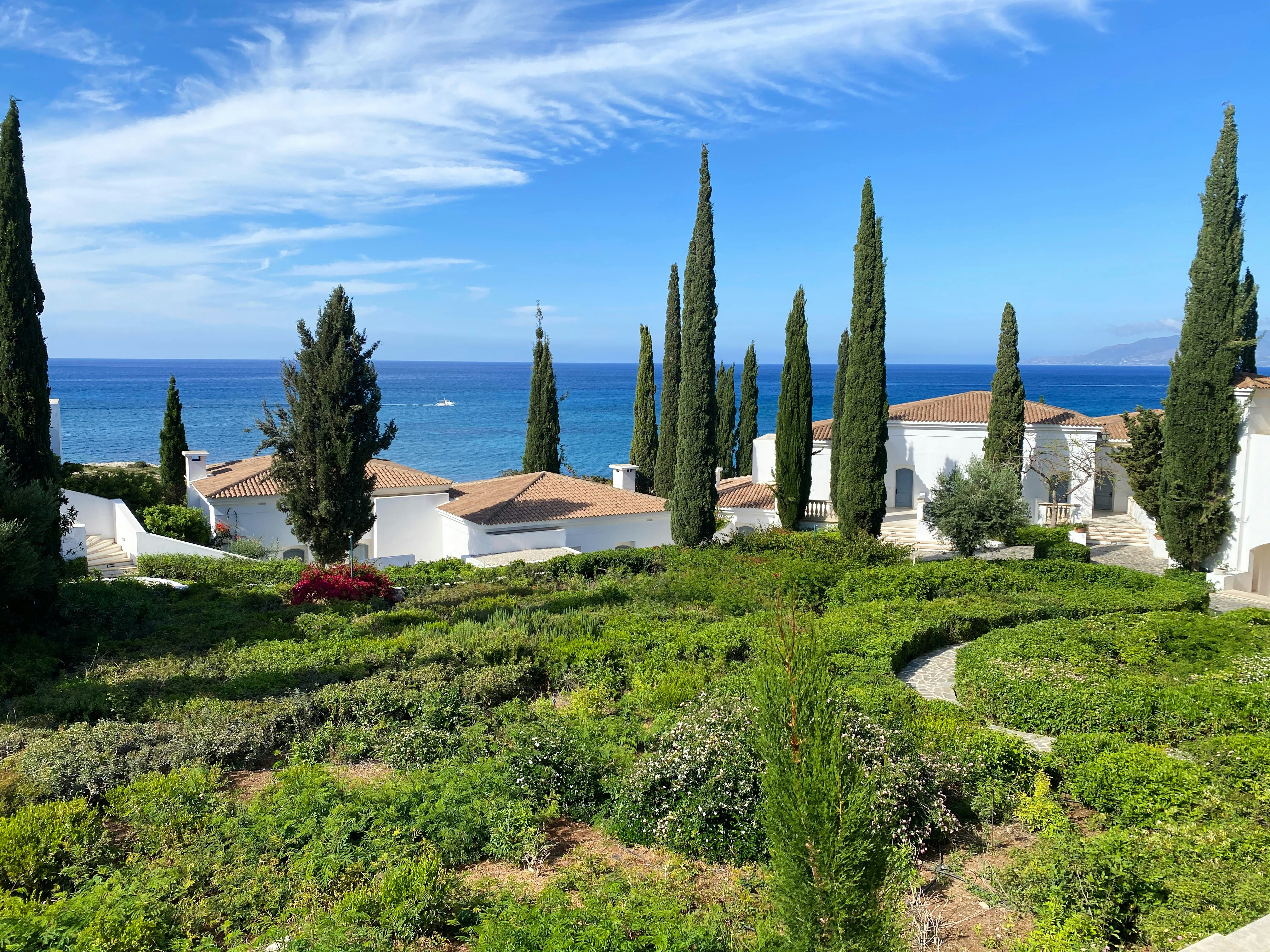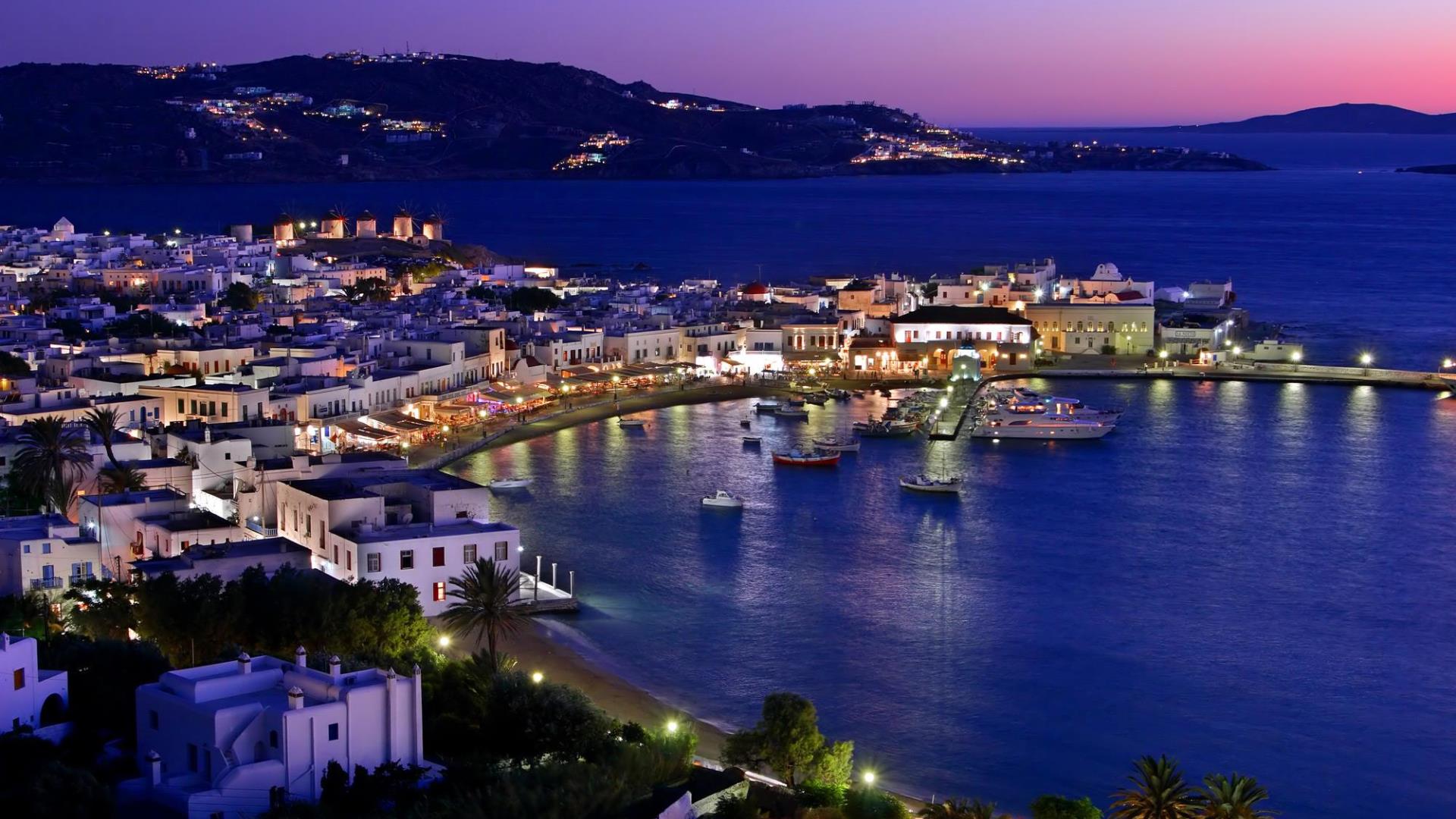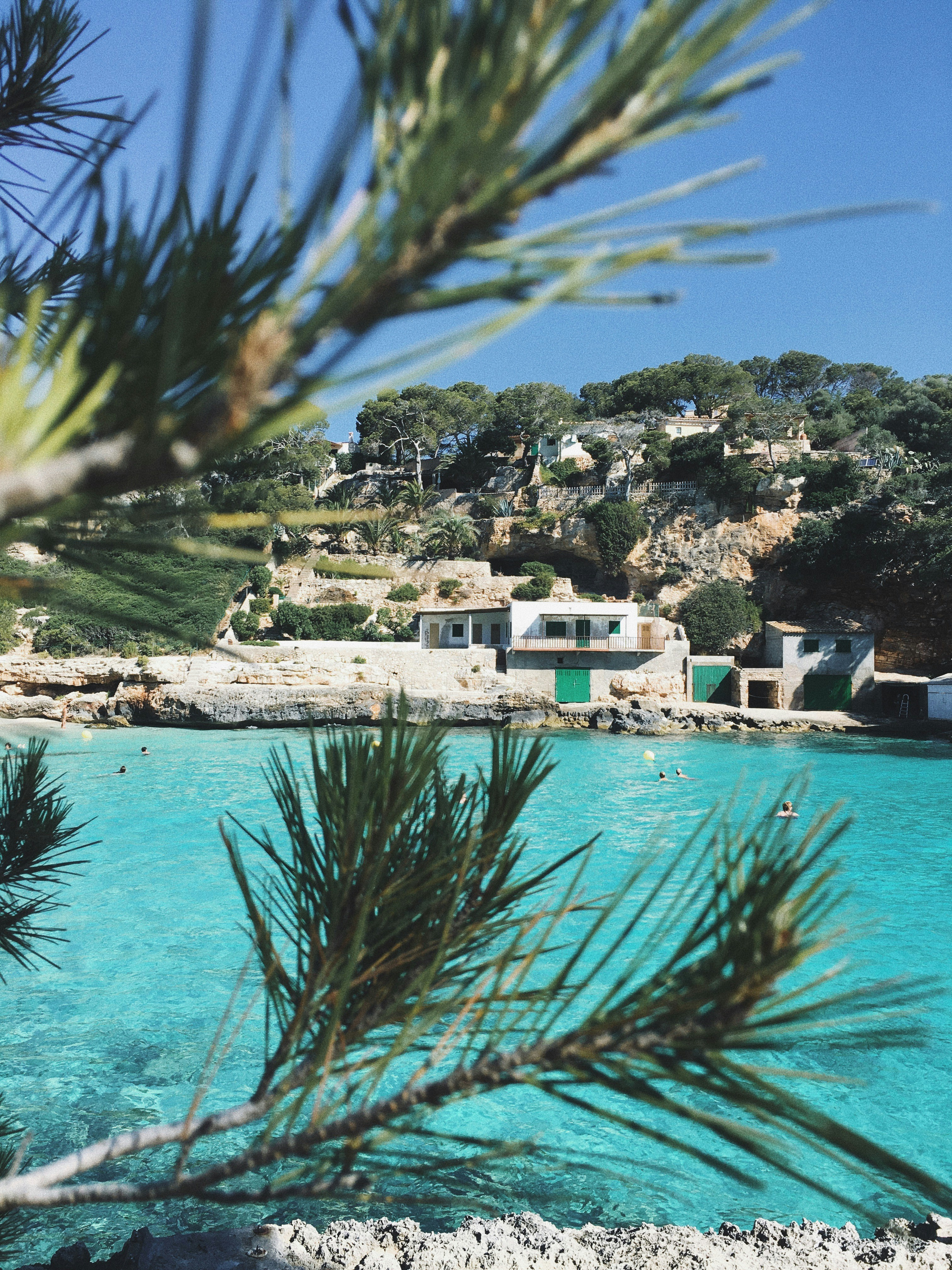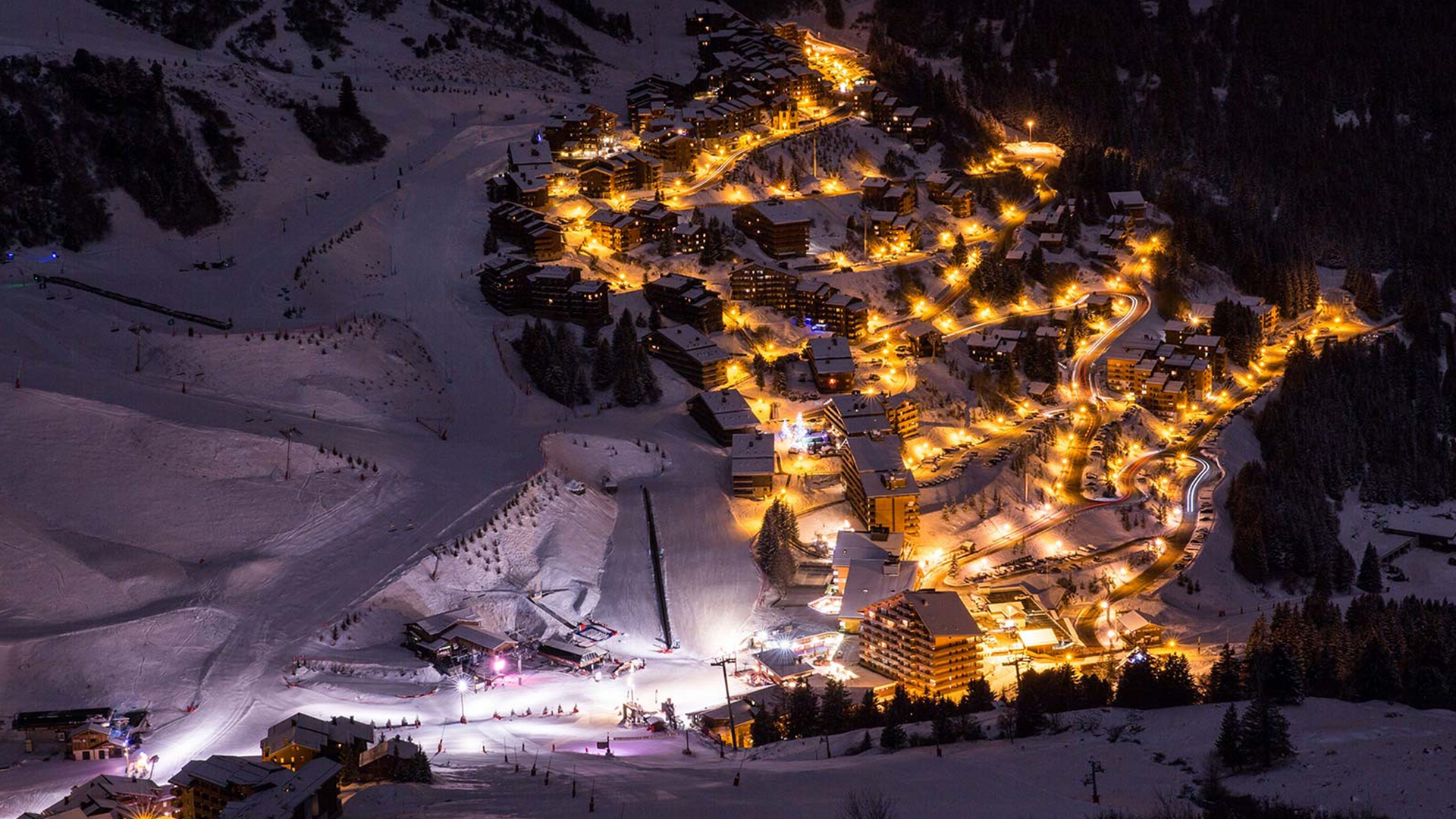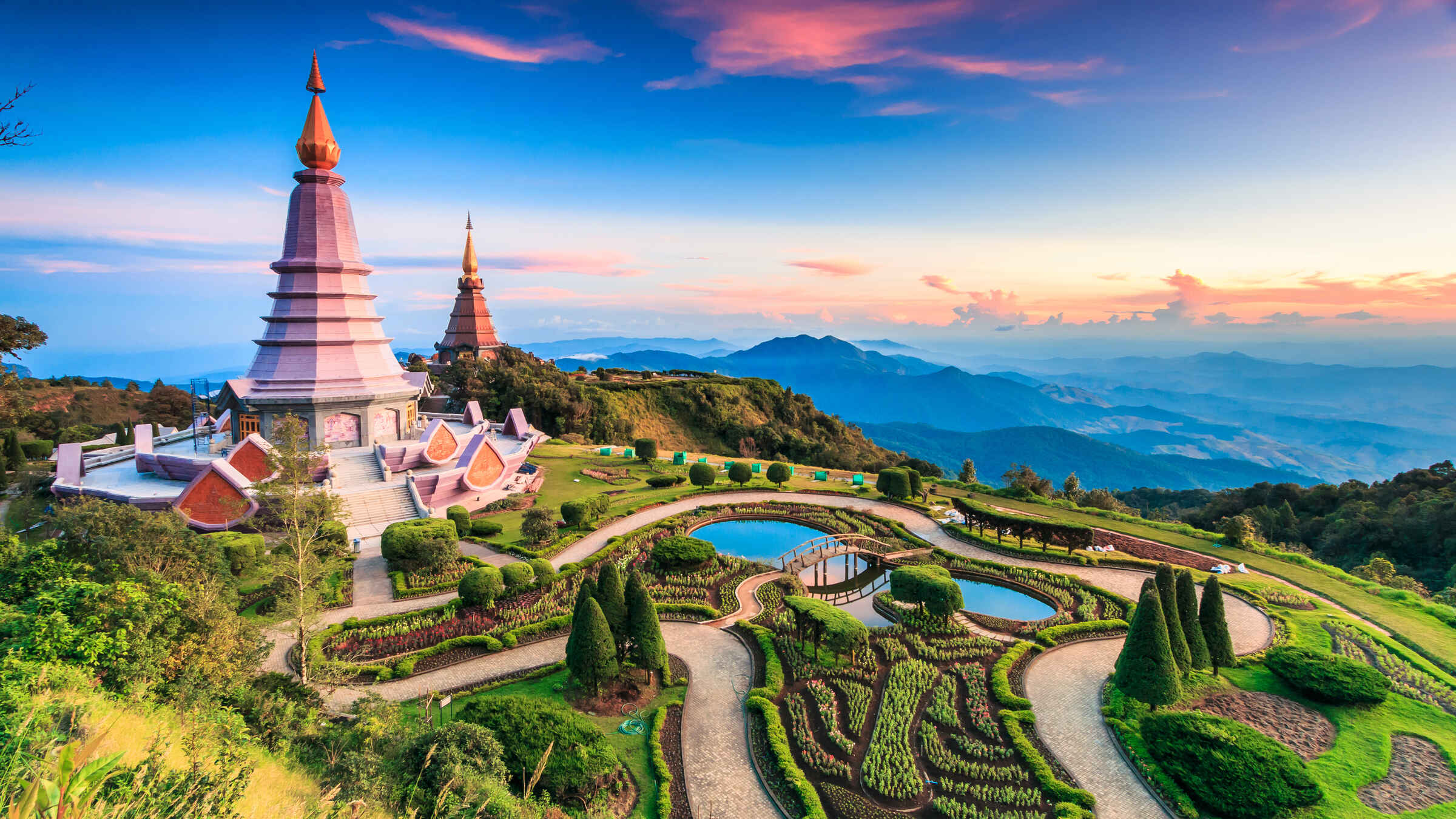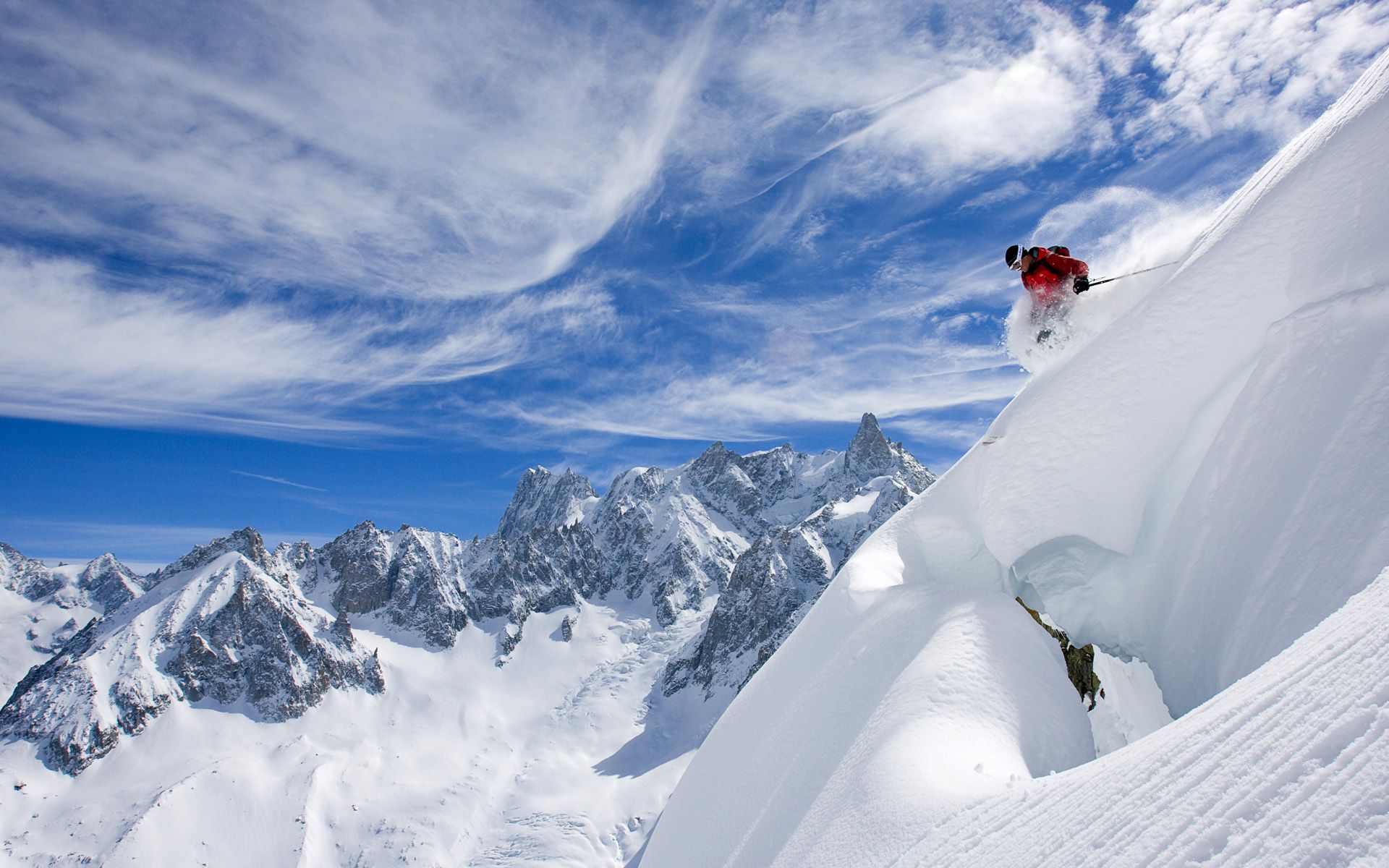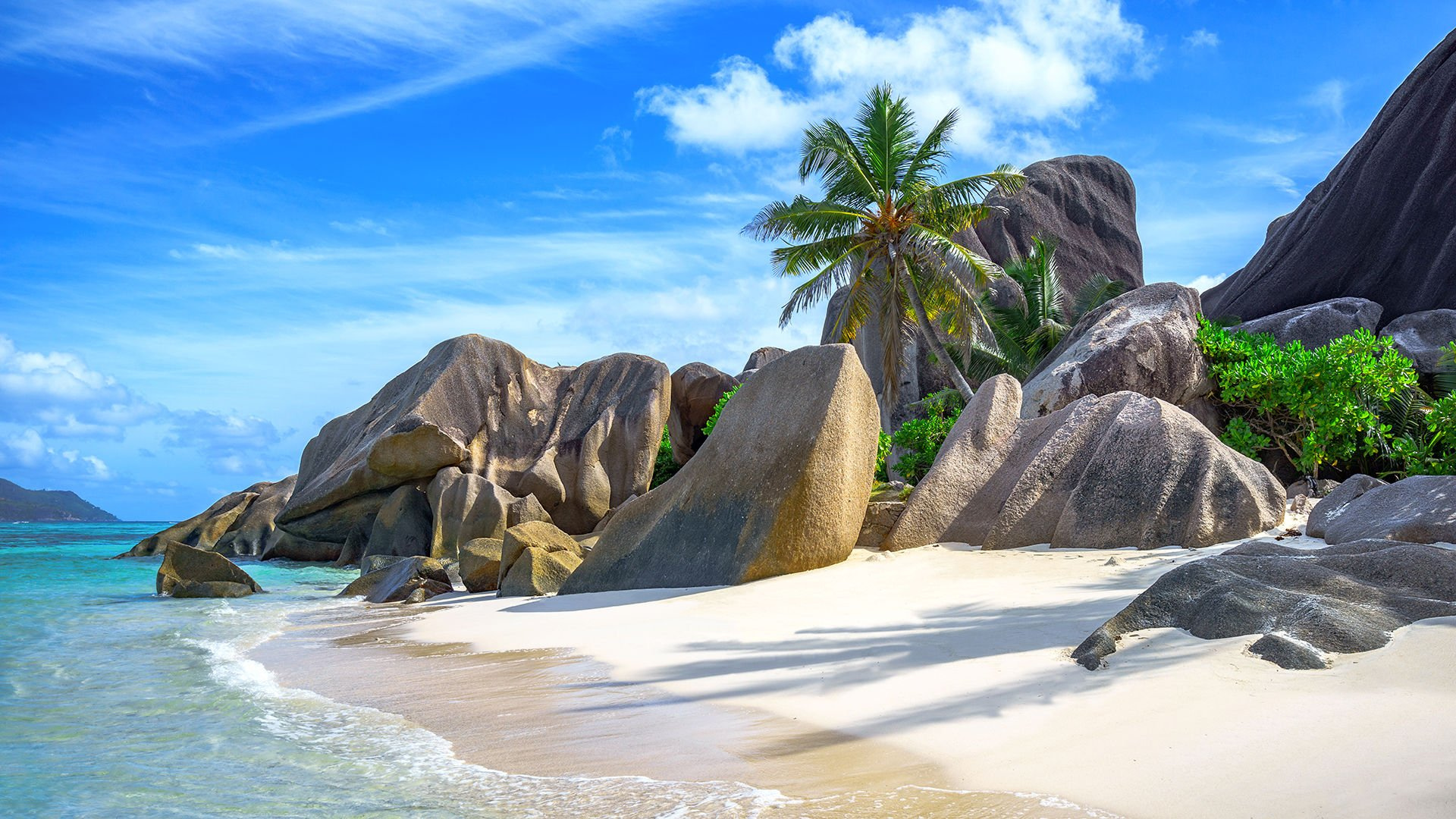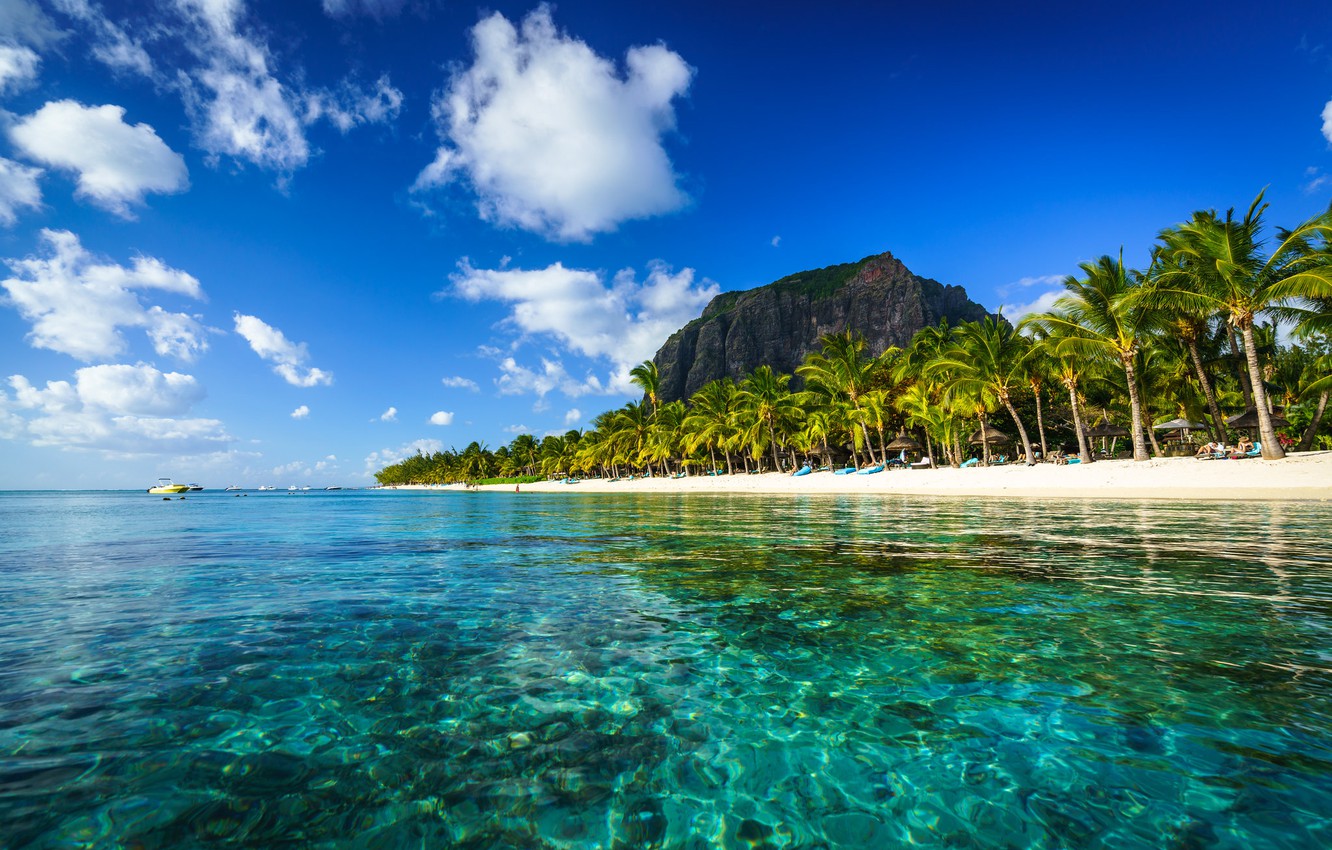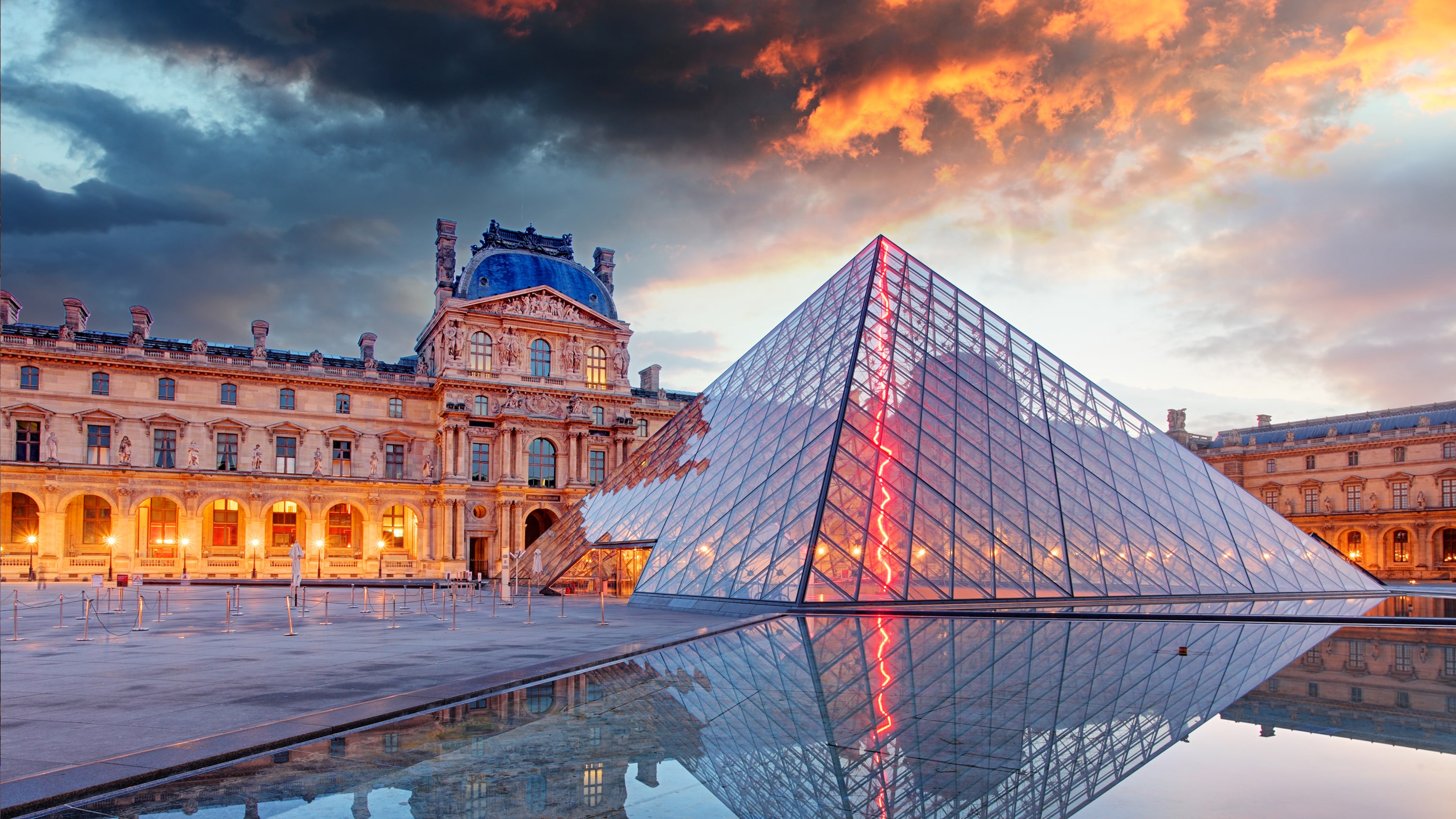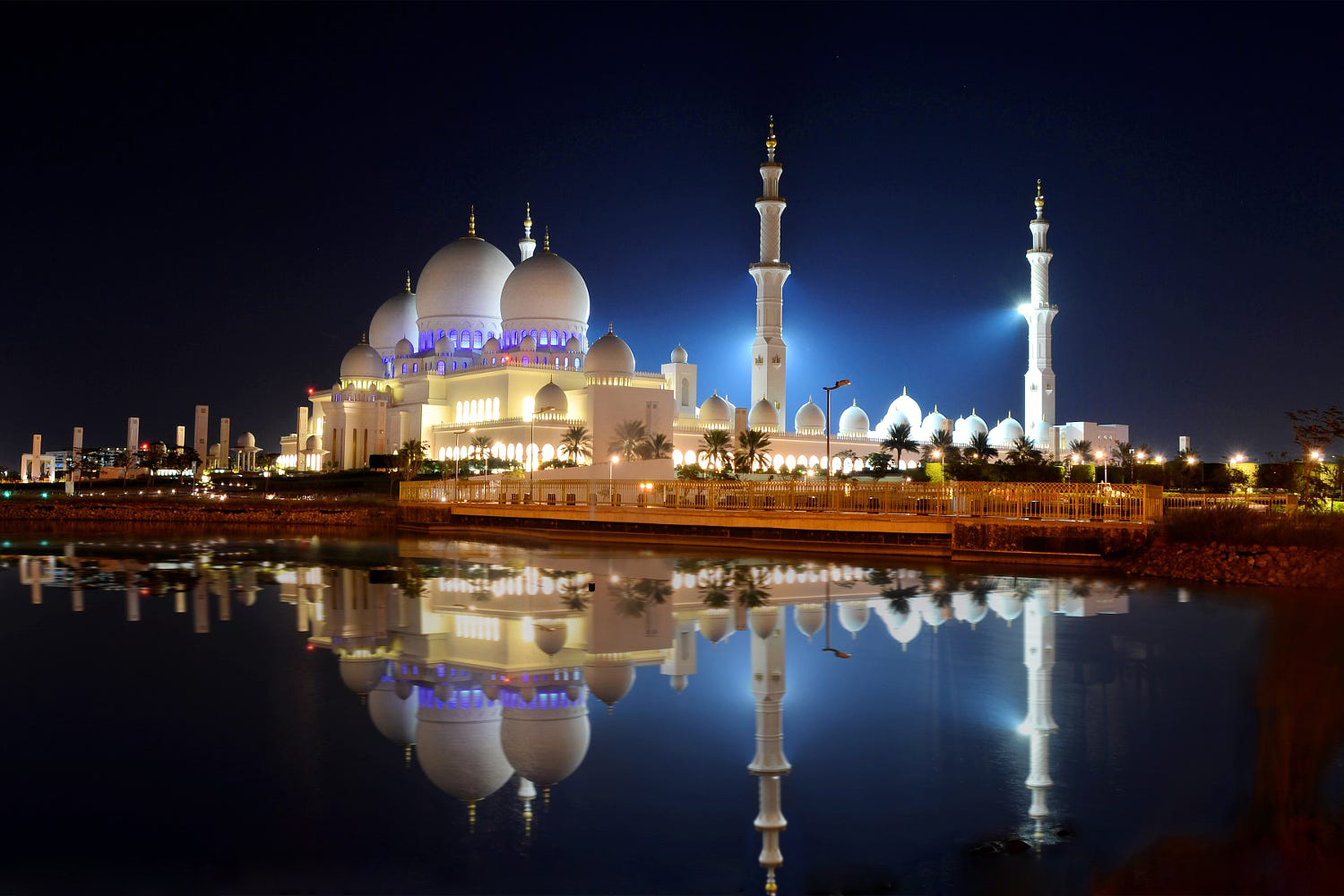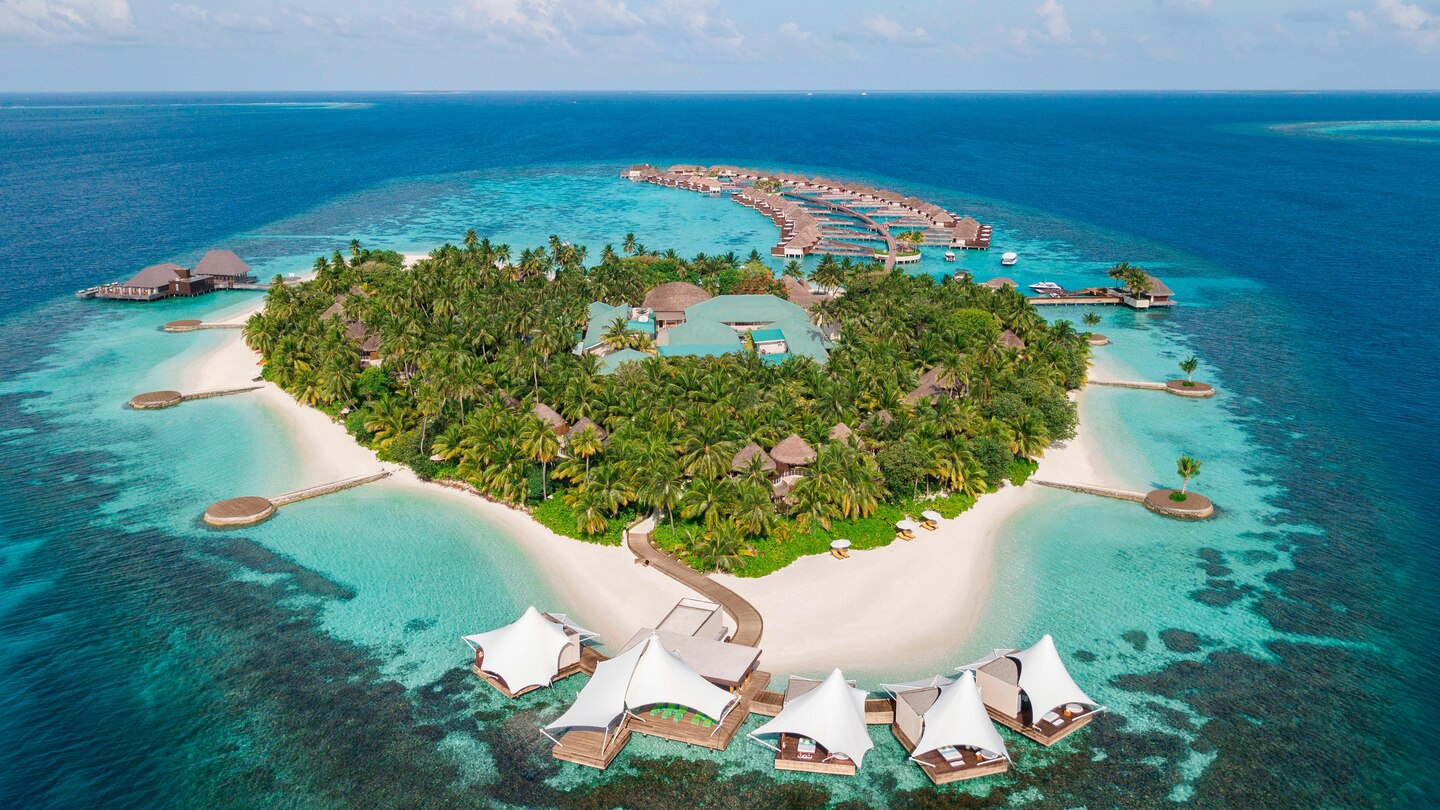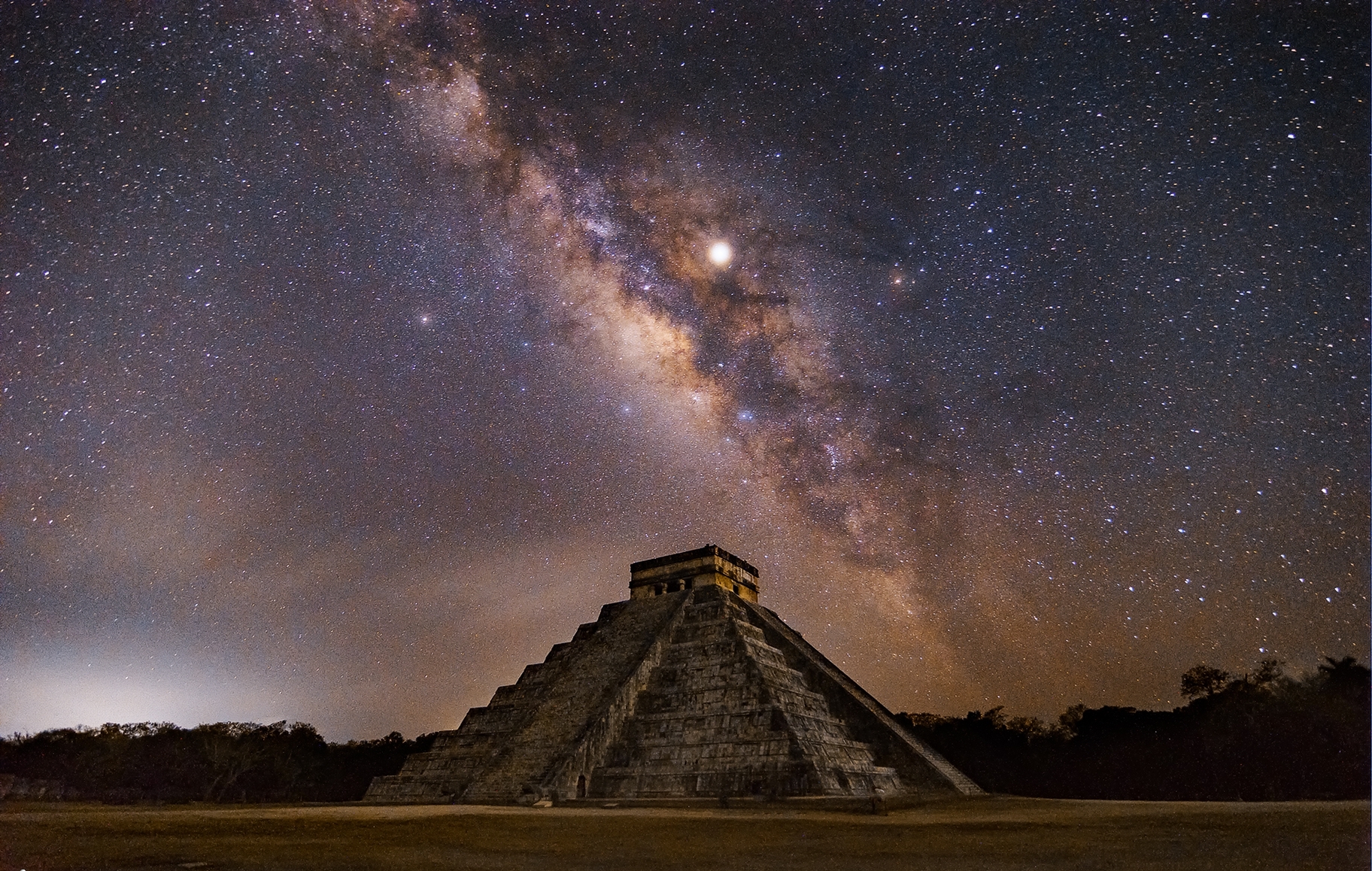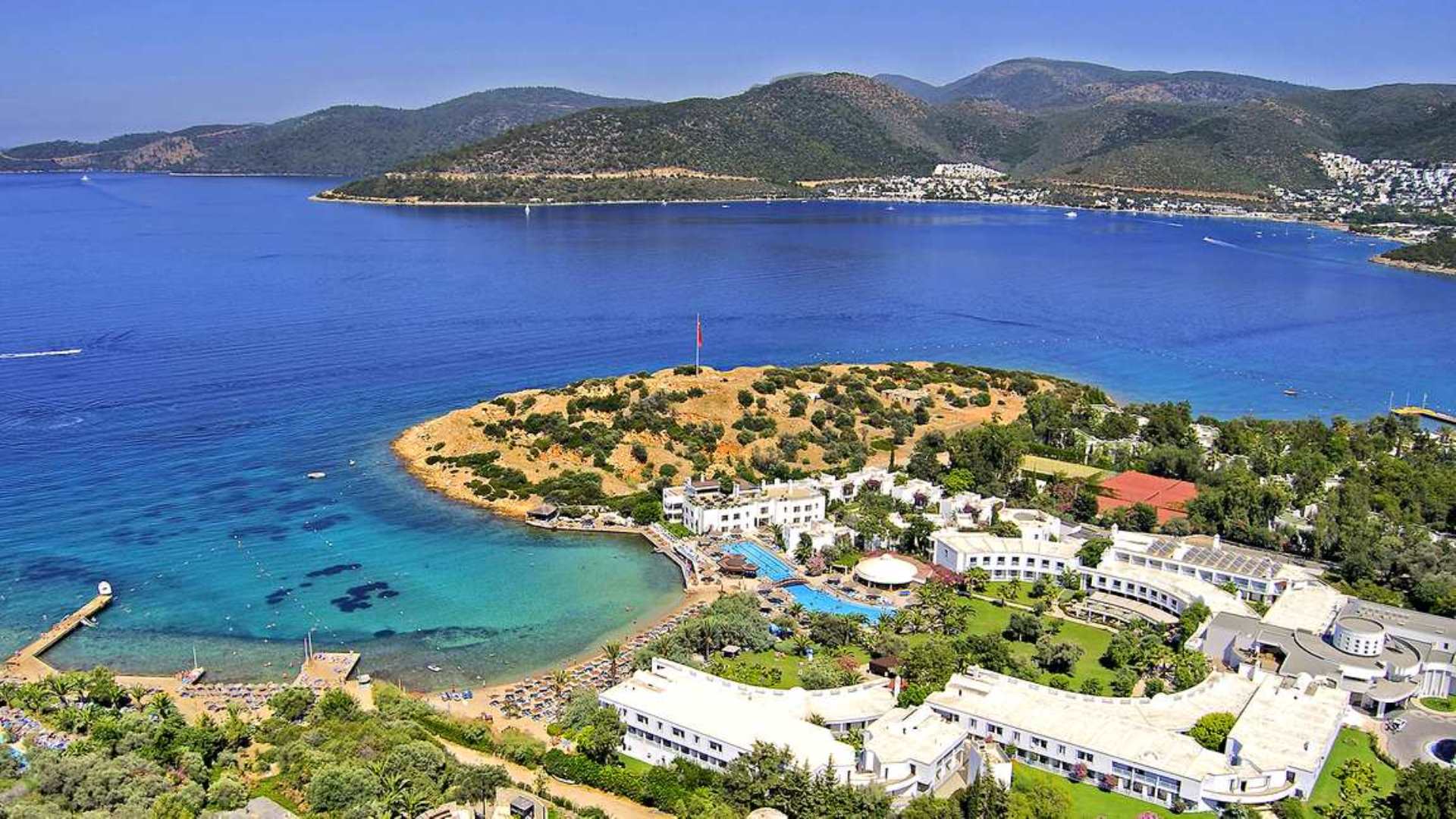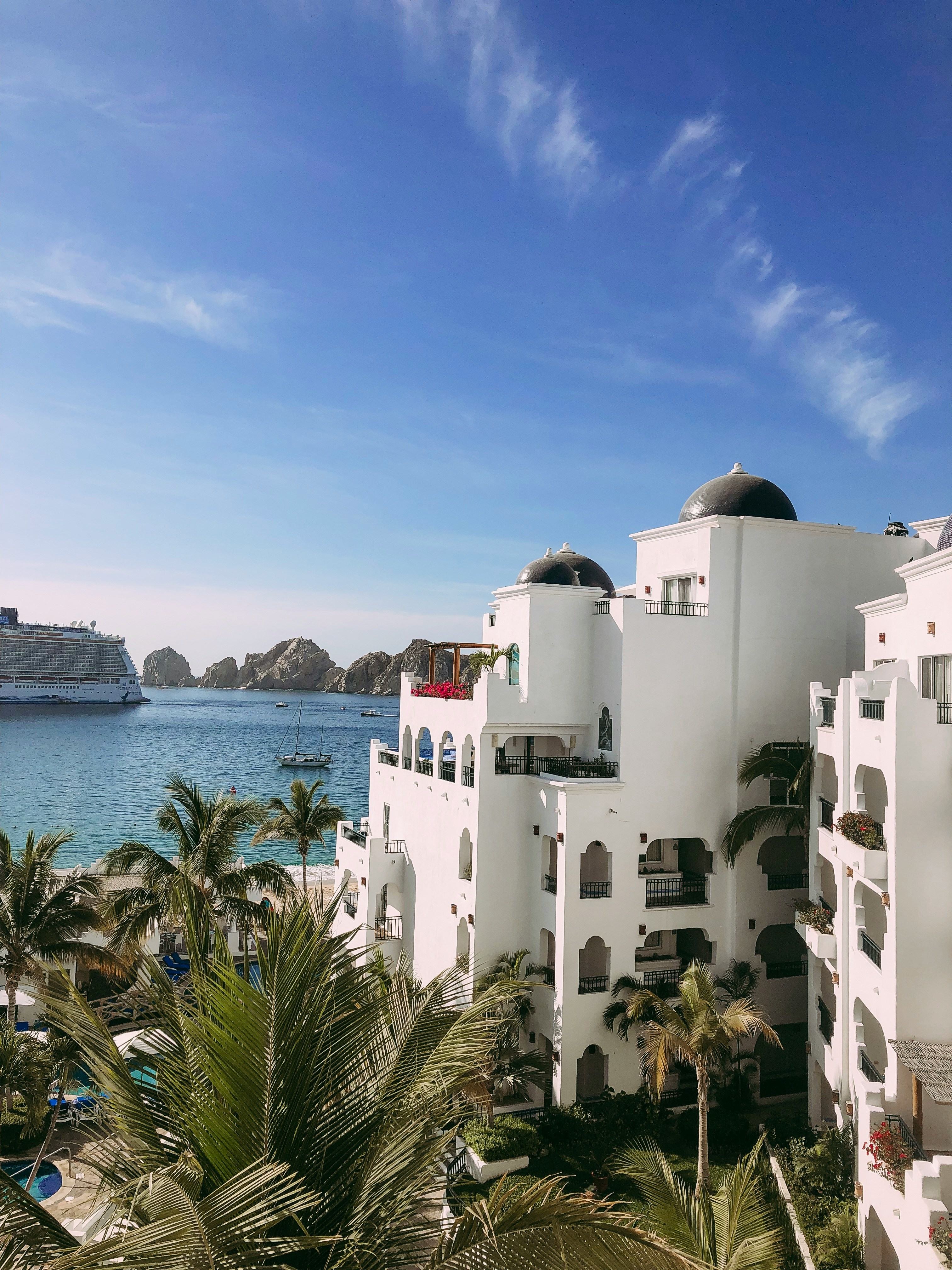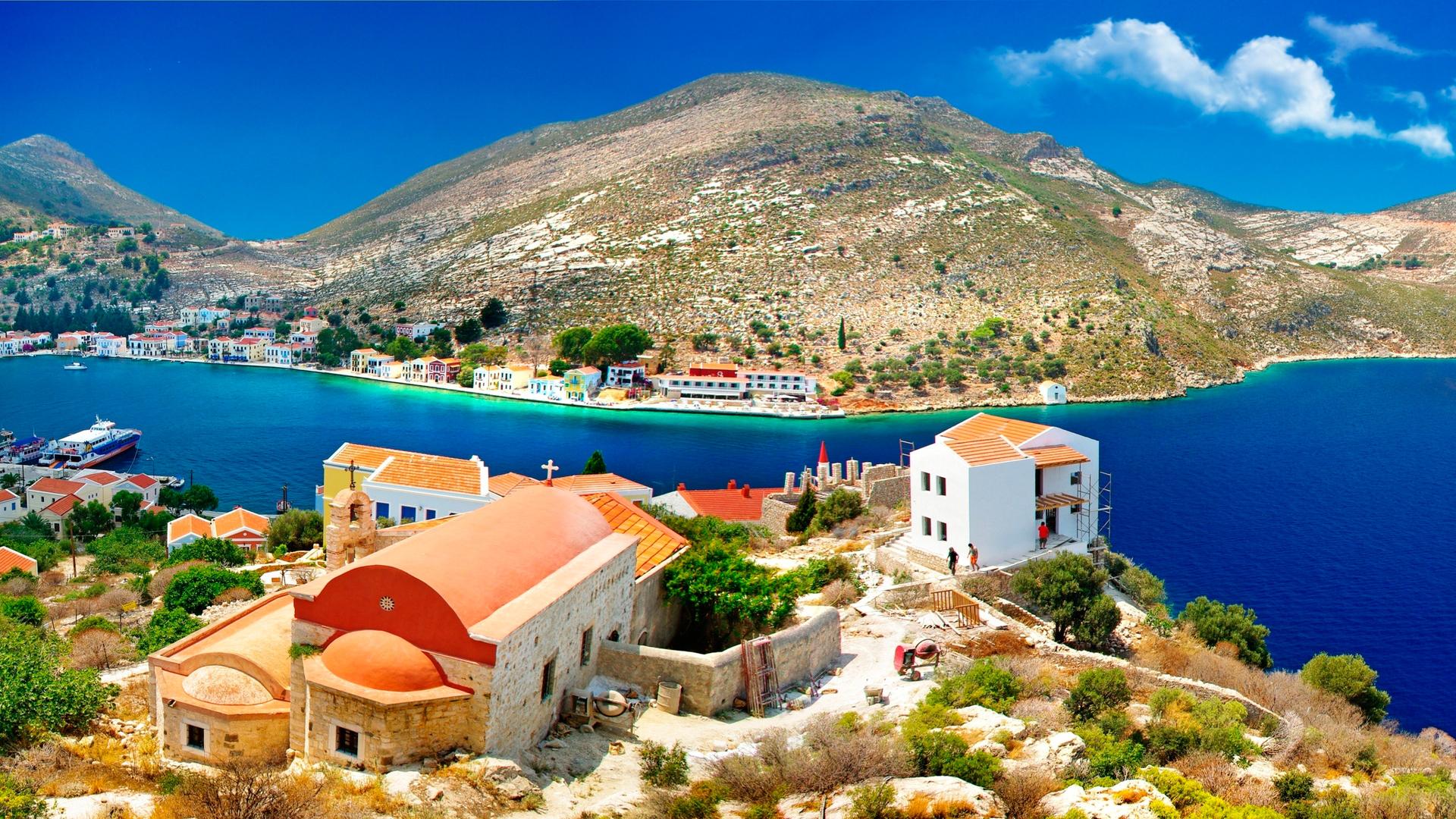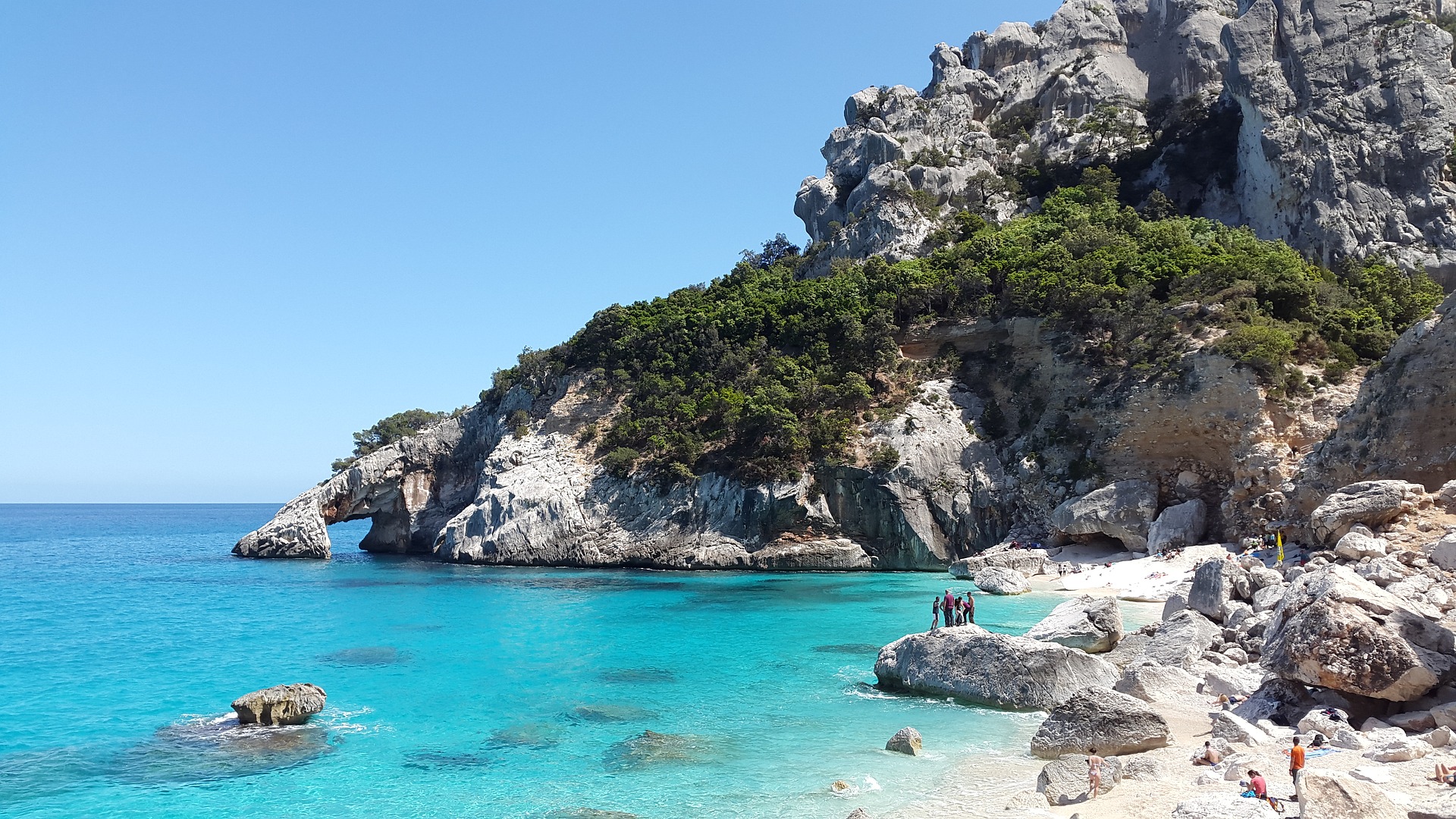Hanoi
Holidays in Hanoi
Hotels
popular destinations that may interest you
Our advantages

30 years of experience in the luxury segment

We organize trips of any complexity

Individual approach and exceptional service

Direct contracts with the best hotels in the world

Concierge service and 24/7 support

Offices in Kyiv, Vienna, Dubai
Hanoi developed on the Red River and its estuaries, like most other trading centres. Since the founding of the State, the Hanoi region has been a holy land. In the third century, before N. Ko Loa (now Dong Ang) was the capital of the State of Au Lak.
In the next century, Hanoi became a centre for fighting Chinese incursions from the north. In the middle of the Red River Delta, Hanoi gradually became a rich and densely populated point. In the fall of 1010, Lee Kong Wuan, founder of Dynasty Lee, transferred the capital from Hoa La to Citadel Dy La, replacing the name Dy La on Tang Long (Citadel of Dragon).
During the Dynasty of Lee, Chan and Le Hanoi, he became a powerful imperial city with hundreds of palaces and pagodas. This land has seen many heroic victorys held over various invaders, including three exiles of Mongolian shelves in 1258, 1,285 and 1,288.
Having resisted and affected the incursions, Thanang Long became the political, economic and cultural centre of the entire State. In this period, the influence of Buddhism and confusion is rapidly evolving. Van Mieu - Kuok You Jam (Literature Temperature and Imperial College) became the first Vietnamese university to give the country thousands of scientists.
Hanoi:
Ko Loa and Temma An Zyong Yong♪ This ancient place of urban settlement and military quotation is located in the village of Ko Loa, Dong An district, Hanoi. Ko Loa has been declared twice as the capital of the State, the first time during the Ain Zyong Hiong era at the end of the third and early second century to N. E., and the second time during Ngo Yong Kouen rule in the middle of the twentieth century. Three fortresses, archaeological monuments of the Apoch Bronze and Ileza, have a length of 16 km. The set of monuments of the Hanoi religious and memorial culture includes the community home of Ngu Chieu Zi Koui, Temple Mi Tiau and Pagoru Bao Sean. Mystical commemorations such as Kolodek Ngok, Flag Tower and Castle Ngu Sa make the area the most interesting from a historical and cultural perspective.
Van Mieu - Cook You Jam♪ Cook, you're Jam's first scientist to finish this university. There remain historic monuments of thousands of years of civilization, including Confucia statues and its students, as well as such ancient civilizations.I'm sorry. Van Mieu - Kuok You Jam is a famous historical and cultural complex composed of the Literature Temple built in 1070 in honour of Confucia and its followers and the first Vietnamese University.
Than Temple♪ In a simple and marvellous corner of the Western Lakes near the northern city gates of the ancient capital Than Long, Kuan Thanh, is one of the four ancient detentions of the city. Existing structures have emerged as a result of the latest reconstruction and reconstruction work during the twenty-first century, which included triple gates, undergrounds, front and central places of worship and moisture. The bronze statue of about 4 metres high and 4 tons weighed in 1677 in honour of St. Guen Thian Chan Wo.
Pagoda Jang Kuok♪ Pagoda Chan Cook is the oldest Pagoda in Hanoi. It was built in the sixth century during the rule of Emperor Lee Nam De, and then named Hai Kook, which means " the foundation of the State " . Initially, it was built outside Yen Fu dam, and later moved to Western Lake. She was called An Cook, Chan Cook and Chan Buck. In full harmony with nature, the architecture of the pagodas gives additional painting to the species surrounding the lake. The existing building is the result of recent renovation work in 1815, which included the triple gates, the main pagoda building, the living room, the ancestral worship room and the garden tower.
One Colony Pagoda♪ Building in 1049, this pagoda is a unique model of the architecture of the Vietnamese pagoda, its shape is like a colored lotus. It was based on the dream of Emperor Lee Thai Tonga, who ruled between 1028 and 1054, according to which he was led to the flower of Bodhisatwa Avalokitesware, the goddess of Miloseria.
Hanoi Cafedral♪ The Bao Thian Tower built in the ruins, which is also known as the Holy Joseph Gathering, was opened for Christmas in 1886 after two years of construction. It's remarkable that his design is similar to that of the Sobor of the Paris Bogomatter.
Hanoi Flago Tower♪ The Hanoi Flago Tower, also known as Kot, is one of the rarest samples of Hanoiarchitecture left untouched during clashes with French between 1894 and 1897 It was built in 1812 and consists of three sites and the tower itself. On the eastern door, the words of the gin huk, which means "to meet the rays of the sun in the sun." There are two words on the west door, which means "reflecting light”, and on the south door, the words of the hoong, which means “directed to the sun”. All sunlights come in here in 36 windows in the shape of flower and six verbal windows.
Hanoi Municipal Theatre♪ The construction of the Hanoi Municipal Theatre began in 1901 and lasted for 10 years until 1911. It was the first opera theatre in the city that was built strictly on European standards. For several years, the theatre has been the venue of known cultural and artistic events in Hanoi, and in subsequent years it has also been the venue for many important political and revolutionary events.
President Ho Shi Min ' s mausolei and Ba Din♪ Mausolei is the place of eternal peace of Vietnam's greatest leader. On the Mavsolei front, the words " Thou Thi Ho Chi Min " , which means " President Ho Chi Min " , are written. Here in the glass sarcophagus, the body of Uncle Ho, exposed to a cherished suit of haki color and simple rubber shoes.
President Ho Shi Min ' s residence♪ Many of the relics associated with the political and public life of the great President have been displayed in this house on the ground. Every plant that grows in a garden behind a house is a living testimony of friendship and respect for the fellow citizens and representatives of foreign States to Uncle Ho. This place attracts many people who seek to reflect the past of the country and the people of Viet Nam.
Museum of History of Viet Nam♪ This museum, located at the very heart of Hanoi, is one of the most complete exhibits of history of this ancient and amazing country. Each of the stages of the country ' s development is reflected in this museum: the relics of the time of paleolith and Neolitha are adjacent to the exponents of the times of the great empire, and those in turn are entering the fascinating and tragic knowledge of the history of the struggle for the country ' s independence. Each of the visitors will probably find the subjectIt is capable of encouraging an interest and desire to improve its horizon by gaining a closer understanding of the many years of ancient Viete country.
Revolution Museum♪ More than 40,000 historical exhibits on the heroic and tragic history of the country are represented in the museum. The events that took place during the national liberation movement against the French and before the construction of the Socialist Republic of Viet Nam were reflected in the 30 museum halls.
Museum Ho Shi Min♪ In shape, this building resembles the flower of the lotus, which is the symbol of the noble character of Uncle Ho. More than two thousand documents, articles, photographs and exhibits, illustrating not only the historical events that have taken place in President Ho Shi Mina ' s life, but also the facts that have taken place in the world since the end of the nineteenth century.
Viet Nam Museum of Arts♪ A lot of interesting facts and fascinating stories about the culture, ethnography and history of the country will guide you to this museum. Many sections on the culture and living of ethnic minorities, the unique discovery of neolitha, paleolith and the age of bronzia, the feudal period in the life of the country, the outstanding works of ancient sculpture and popular painting, the technological arts and the artists of the first half of the twentieth century.
Vietnamese Army Museum♪ The Vietnamese army museum is located on Dien Bien Fu Street in Hanoi. The areas previously housed by the French army barracks are 10,000 square metres, divided by 30 viewpoints. The museum opened in December 1959. It contains items and documents related to the education and development of the Vietnamese armed forces. The exponents remaining from past conflicts are displayed. The road that the Vietnamese People ' s Army (1946-1954) has seen in the form of weapons, maps and objects left behind by the famous campaign at Dien Bien Fu, as well as personal belonging to Vietnamese soldiers once. There are also several large and impressive heavy weapons seized from the enemy and wrecked aircraft.
Western Lake♪ Western Lake, Vietnamese Ho Tai, the largest lake in the lakeThe centre of Hanoi is an area of 500 hectares of land in the Tai Ho neighbourhood. In the past, Western Lake was part of the Hong River. As one of the most beautiful places in Hanoi, the lake once served as a resort for mandarins and kings. There were many constructions on his shores, including the Doors of Thiy Hoa, the Holy Ham Nguyen, the Palace of You Hoa, Pagoda Kim Lin and the Palace of Ngok Dam. A 14-kilometre trail around the lake leads to the Divine Treevna Ngi Tam, Persik Sadu Nyat Tan and Temple Tai Ho, built in honor of Princes Lieu. Today, there are many hotels, large and small. Visitors may go to the examination of sights and may also enjoy the traditional dishes of the Vietnamese kitchen, such as Ho Tai shrimp pies, snails and fish dishes.
Park Thong Nyat♪ The modern park, opened in 1960, was named Thong Nyat (united), reflecting the hope of the northern half of the country for reunification. In April 1980, on the occasion of the 110th anniversary of Lenin ' s birth, Thong Nyat was renamed Lenin Park. There are many gardens and trees in the park, as well as the islands in the middle of the lake. It is here during the Tet holiday that the famous Vesenni Festival is being conducted.
Le Mat, snake village♪
The authoritative Eastern medicine has long recognized food from snake meat and treatments based on different kinds of snakes as one of the most effective methods in treating many of the most serious human diseases. The generally recognized reinstatement of the reproductive function of men, coupled with the treatment of muscle, joint and vascular diseases, only a small part of this section of medicine - coupled with no less effective vegetables, the snake heals virtually any arrogance.
The village of Le Mat, located in the northern suburbs of the country, is particularly glossed by its Zmevedi. If you get there, you'll have to hear a beautiful legend about a young fisherman who saved the life of a beautiful princess from a monster that turned her boat. The fearless fisherman has defeated a huge snake and spared the population of the surrounding villages from fear of a river monster... The profession of the snake hunter is now honoured and honored.Respect: Every year, on March 20th, on the eastern calendar, villagers organize a snake festival. The legend of a brave fisherman is once again and again on the improvised stage, participants and viewers are cloaked with exquisite snake dishes.
The locality of Le Math provides delicate snake meat to restaurants throughout the country - on special snake farms, local residents breed presumptive, whose poison is deadly dangerous to humans and animals: gady, aspids, cobra and poisonous water snakes.
In the next century, Hanoi became a centre for fighting Chinese incursions from the north. In the middle of the Red River Delta, Hanoi gradually became a rich and densely populated point. In the fall of 1010, Lee Kong Wuan, founder of Dynasty Lee, transferred the capital from Hoa La to Citadel Dy La, replacing the name Dy La on Tang Long (Citadel of Dragon).
During the Dynasty of Lee, Chan and Le Hanoi, he became a powerful imperial city with hundreds of palaces and pagodas. This land has seen many heroic victorys held over various invaders, including three exiles of Mongolian shelves in 1258, 1,285 and 1,288.
Having resisted and affected the incursions, Thanang Long became the political, economic and cultural centre of the entire State. In this period, the influence of Buddhism and confusion is rapidly evolving. Van Mieu - Kuok You Jam (Literature Temperature and Imperial College) became the first Vietnamese university to give the country thousands of scientists.
Hanoi:
Ko Loa and Temma An Zyong Yong♪ This ancient place of urban settlement and military quotation is located in the village of Ko Loa, Dong An district, Hanoi. Ko Loa has been declared twice as the capital of the State, the first time during the Ain Zyong Hiong era at the end of the third and early second century to N. E., and the second time during Ngo Yong Kouen rule in the middle of the twentieth century. Three fortresses, archaeological monuments of the Apoch Bronze and Ileza, have a length of 16 km. The set of monuments of the Hanoi religious and memorial culture includes the community home of Ngu Chieu Zi Koui, Temple Mi Tiau and Pagoru Bao Sean. Mystical commemorations such as Kolodek Ngok, Flag Tower and Castle Ngu Sa make the area the most interesting from a historical and cultural perspective.
Van Mieu - Cook You Jam♪ Cook, you're Jam's first scientist to finish this university. There remain historic monuments of thousands of years of civilization, including Confucia statues and its students, as well as such ancient civilizations.I'm sorry. Van Mieu - Kuok You Jam is a famous historical and cultural complex composed of the Literature Temple built in 1070 in honour of Confucia and its followers and the first Vietnamese University.
Than Temple♪ In a simple and marvellous corner of the Western Lakes near the northern city gates of the ancient capital Than Long, Kuan Thanh, is one of the four ancient detentions of the city. Existing structures have emerged as a result of the latest reconstruction and reconstruction work during the twenty-first century, which included triple gates, undergrounds, front and central places of worship and moisture. The bronze statue of about 4 metres high and 4 tons weighed in 1677 in honour of St. Guen Thian Chan Wo.
Pagoda Jang Kuok♪ Pagoda Chan Cook is the oldest Pagoda in Hanoi. It was built in the sixth century during the rule of Emperor Lee Nam De, and then named Hai Kook, which means " the foundation of the State " . Initially, it was built outside Yen Fu dam, and later moved to Western Lake. She was called An Cook, Chan Cook and Chan Buck. In full harmony with nature, the architecture of the pagodas gives additional painting to the species surrounding the lake. The existing building is the result of recent renovation work in 1815, which included the triple gates, the main pagoda building, the living room, the ancestral worship room and the garden tower.
One Colony Pagoda♪ Building in 1049, this pagoda is a unique model of the architecture of the Vietnamese pagoda, its shape is like a colored lotus. It was based on the dream of Emperor Lee Thai Tonga, who ruled between 1028 and 1054, according to which he was led to the flower of Bodhisatwa Avalokitesware, the goddess of Miloseria.
Hanoi Cafedral♪ The Bao Thian Tower built in the ruins, which is also known as the Holy Joseph Gathering, was opened for Christmas in 1886 after two years of construction. It's remarkable that his design is similar to that of the Sobor of the Paris Bogomatter.
Hanoi Flago Tower♪ The Hanoi Flago Tower, also known as Kot, is one of the rarest samples of Hanoiarchitecture left untouched during clashes with French between 1894 and 1897 It was built in 1812 and consists of three sites and the tower itself. On the eastern door, the words of the gin huk, which means "to meet the rays of the sun in the sun." There are two words on the west door, which means "reflecting light”, and on the south door, the words of the hoong, which means “directed to the sun”. All sunlights come in here in 36 windows in the shape of flower and six verbal windows.
Hanoi Municipal Theatre♪ The construction of the Hanoi Municipal Theatre began in 1901 and lasted for 10 years until 1911. It was the first opera theatre in the city that was built strictly on European standards. For several years, the theatre has been the venue of known cultural and artistic events in Hanoi, and in subsequent years it has also been the venue for many important political and revolutionary events.
President Ho Shi Min ' s mausolei and Ba Din♪ Mausolei is the place of eternal peace of Vietnam's greatest leader. On the Mavsolei front, the words " Thou Thi Ho Chi Min " , which means " President Ho Chi Min " , are written. Here in the glass sarcophagus, the body of Uncle Ho, exposed to a cherished suit of haki color and simple rubber shoes.
President Ho Shi Min ' s residence♪ Many of the relics associated with the political and public life of the great President have been displayed in this house on the ground. Every plant that grows in a garden behind a house is a living testimony of friendship and respect for the fellow citizens and representatives of foreign States to Uncle Ho. This place attracts many people who seek to reflect the past of the country and the people of Viet Nam.
Museum of History of Viet Nam♪ This museum, located at the very heart of Hanoi, is one of the most complete exhibits of history of this ancient and amazing country. Each of the stages of the country ' s development is reflected in this museum: the relics of the time of paleolith and Neolitha are adjacent to the exponents of the times of the great empire, and those in turn are entering the fascinating and tragic knowledge of the history of the struggle for the country ' s independence. Each of the visitors will probably find the subjectIt is capable of encouraging an interest and desire to improve its horizon by gaining a closer understanding of the many years of ancient Viete country.
Revolution Museum♪ More than 40,000 historical exhibits on the heroic and tragic history of the country are represented in the museum. The events that took place during the national liberation movement against the French and before the construction of the Socialist Republic of Viet Nam were reflected in the 30 museum halls.
Museum Ho Shi Min♪ In shape, this building resembles the flower of the lotus, which is the symbol of the noble character of Uncle Ho. More than two thousand documents, articles, photographs and exhibits, illustrating not only the historical events that have taken place in President Ho Shi Mina ' s life, but also the facts that have taken place in the world since the end of the nineteenth century.
Viet Nam Museum of Arts♪ A lot of interesting facts and fascinating stories about the culture, ethnography and history of the country will guide you to this museum. Many sections on the culture and living of ethnic minorities, the unique discovery of neolitha, paleolith and the age of bronzia, the feudal period in the life of the country, the outstanding works of ancient sculpture and popular painting, the technological arts and the artists of the first half of the twentieth century.
Vietnamese Army Museum♪ The Vietnamese army museum is located on Dien Bien Fu Street in Hanoi. The areas previously housed by the French army barracks are 10,000 square metres, divided by 30 viewpoints. The museum opened in December 1959. It contains items and documents related to the education and development of the Vietnamese armed forces. The exponents remaining from past conflicts are displayed. The road that the Vietnamese People ' s Army (1946-1954) has seen in the form of weapons, maps and objects left behind by the famous campaign at Dien Bien Fu, as well as personal belonging to Vietnamese soldiers once. There are also several large and impressive heavy weapons seized from the enemy and wrecked aircraft.
Western Lake♪ Western Lake, Vietnamese Ho Tai, the largest lake in the lakeThe centre of Hanoi is an area of 500 hectares of land in the Tai Ho neighbourhood. In the past, Western Lake was part of the Hong River. As one of the most beautiful places in Hanoi, the lake once served as a resort for mandarins and kings. There were many constructions on his shores, including the Doors of Thiy Hoa, the Holy Ham Nguyen, the Palace of You Hoa, Pagoda Kim Lin and the Palace of Ngok Dam. A 14-kilometre trail around the lake leads to the Divine Treevna Ngi Tam, Persik Sadu Nyat Tan and Temple Tai Ho, built in honor of Princes Lieu. Today, there are many hotels, large and small. Visitors may go to the examination of sights and may also enjoy the traditional dishes of the Vietnamese kitchen, such as Ho Tai shrimp pies, snails and fish dishes.
Park Thong Nyat♪ The modern park, opened in 1960, was named Thong Nyat (united), reflecting the hope of the northern half of the country for reunification. In April 1980, on the occasion of the 110th anniversary of Lenin ' s birth, Thong Nyat was renamed Lenin Park. There are many gardens and trees in the park, as well as the islands in the middle of the lake. It is here during the Tet holiday that the famous Vesenni Festival is being conducted.
Le Mat, snake village♪
The authoritative Eastern medicine has long recognized food from snake meat and treatments based on different kinds of snakes as one of the most effective methods in treating many of the most serious human diseases. The generally recognized reinstatement of the reproductive function of men, coupled with the treatment of muscle, joint and vascular diseases, only a small part of this section of medicine - coupled with no less effective vegetables, the snake heals virtually any arrogance.
The village of Le Mat, located in the northern suburbs of the country, is particularly glossed by its Zmevedi. If you get there, you'll have to hear a beautiful legend about a young fisherman who saved the life of a beautiful princess from a monster that turned her boat. The fearless fisherman has defeated a huge snake and spared the population of the surrounding villages from fear of a river monster... The profession of the snake hunter is now honoured and honored.Respect: Every year, on March 20th, on the eastern calendar, villagers organize a snake festival. The legend of a brave fisherman is once again and again on the improvised stage, participants and viewers are cloaked with exquisite snake dishes.
The locality of Le Math provides delicate snake meat to restaurants throughout the country - on special snake farms, local residents breed presumptive, whose poison is deadly dangerous to humans and animals: gady, aspids, cobra and poisonous water snakes.

